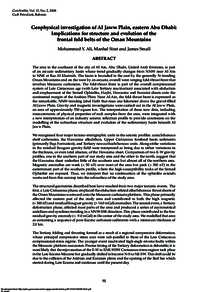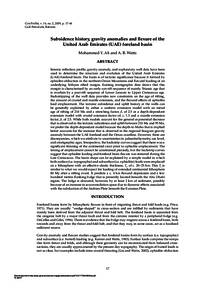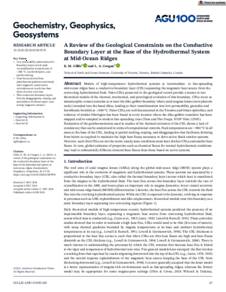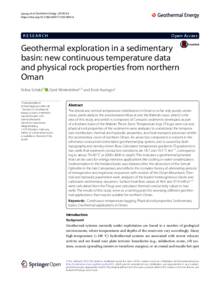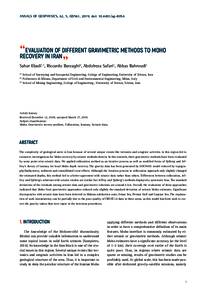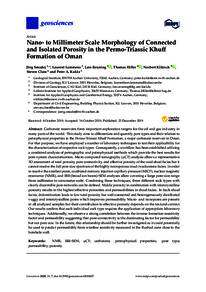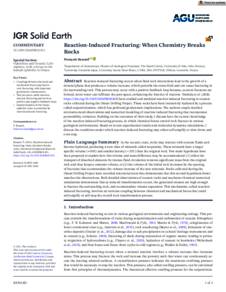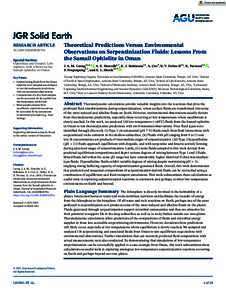Document
Geophysical investigation of Al Jaww Plain, eastern Abu Dhabi : implications for structure and evolution of the frontal fold belts of the Oman mountains.
Identifier
DOI: 10.2113/geoarabia130291
Source
GeoArabia. V. 13, 2, P. 91-118
Contributors
Sirat, Manhal., Author
Small, James., Author
Country
Bahrain.
City
Manama
Publisher
Gulf PetroLink.
Gregorian
2008-04-01
Language
English
English abstract
The area to the southeast of the city of Al Ain, Abu Dhabi, United Arab Emirates, is part of an arcuate sedimentary basin whose trend gradually changes from NNW near Al Ain to NNE at Ras Al Khaimah. The basin is bounded to the east by the generally N-trending Oman Mountains and on the west by an arcuate, overall west-verging fold-thrust front that involves Mesozoic carbonates. The fold-thrust front is part of the overall compressional system of Late Cretaceous age (with Late Tertiary reactivation) associated with obduction and emplacement of the Semail Ophiolite, Haybi, Hawasina and Sumeini sheets onto the continental margin of the Arabian Plate. Near Al Ain, the fold-thrust front is expressed as the remarkable, NNW-trending Jabal Hafit that rises one kilometer above the gravel-filled Al Jaww Plain. Gravity and magnetic investigations were carried-out in the Al Jaww Plain, an area of approximately 550 square km. The interpretation of these new data, including measurements of physical properties of rock samples from the area, were integrated with a new interpretation of an industry seismic reflection profile to provide constraints on the modelling of the subsurface structure and evolution of the sedimentary basin beneath Al Jaww Plain. We recognised four major tectono-stratigraphic units in the seismic profiles: autochthonous shelf carbonates, the Hawasina allochthon, Upper Cretaceous foreland basin sediments (primarily Fiqa Formation), and Tertiary neo-authochthonous units. Along-strike variations in the residual Bouguer gravity field were interpreted as being due to either variations in the thickness, or even total absence, of the Hawasina sheet. Comparison of two E-W gravity profiles, one in the southern part of our study area and the other to the north, suggest that the Hawasina sheet underlies little of the southern area but almost all of the northern area. Magnetic anomalies are weak ( 50 nT) over most of the area but peak (> 300 nT) in the easternmost part of the southern profile, where the high-susceptibility rocks of the Semail Ophiolite are exposed. Thus, we interpret that no continuation of the ophiolite extends westward from this outcrop into the subsurface of the study area. The structural geometries described here have resulted from two major tectonic events. The first, a Late Cretaceous phase, emplaced the obduction-related allochthonous thrust sheets of the Oman Mountains westward onto the Mesozoic carbonate platform. This phase primarily affected the eastern part of the study area and contributed to both the high magnetic (> 300 nT) and residual Bouguer gravity (> 14.0 mGal) anomalies. The second event, a Tertiary deformation phase, affected most parts of the area and produced a series of asymmetrical anticlines and synclines trending in a NNW-SSE direction. This phase contributed to the low residual gravity anomaly (-9.0 mGal) in the center of the study area. We modelled that area as containing a sequence of post-Eocene carbonate sediments with a minimum thickness of 2.0 km. The Tertiary folding and thrusting formed as a result of a regional compressive deformation, whose principal compressive stress axes were sub-parallel to those of the Late Cretaceous compressional stress regime. The younger event reactivated high-angle reverse faults within the Mesozoic platform succession. Precise timing of the Tertiary deformation is debatable; it is most likely that the rejuvenation of the E-W to ENE-WSW Cretaceous stress regime took place in the Late Eocene-Miocene but gradually shifted to become N-S to NE-SW. This shift could be due to the collision of the Arabian and Eurasian plates and the opening of the Red Sea which started during Late Eocene and continues until the present-day.
Description
GeoArabia
Volume 13, Issue 2, 2008, Pages 91-118
Volume 13, Issue 2, 2008, Pages 91-118
ISSN
1025-6059
Category
Journal articles

